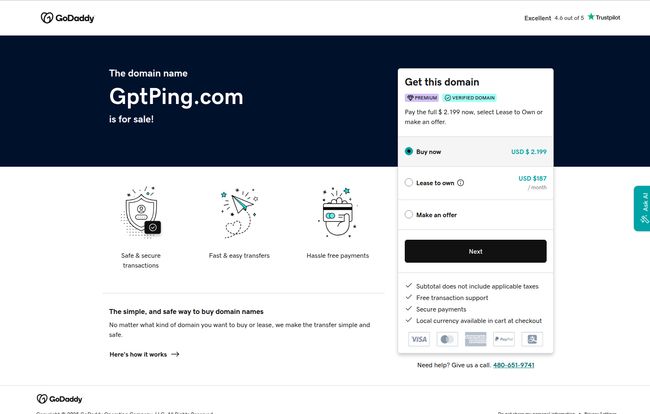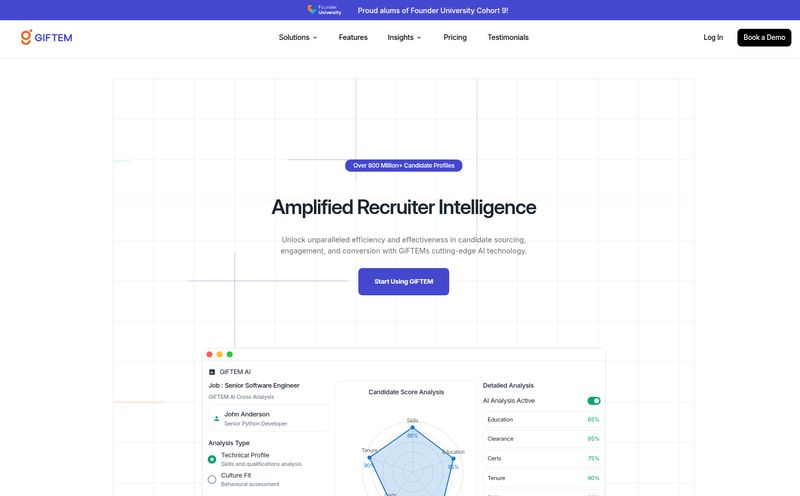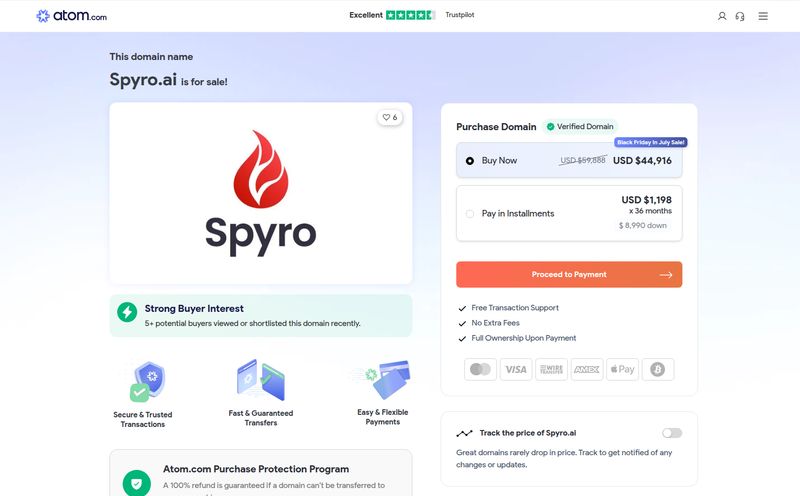You ever get that feeling? You’re scrolling through Product Hunt or some obscure tech forum late at night, and you stumble upon an idea so simple, so elegantly brilliant, you just kick yourself for not thinking of it first. That was me, a few weeks back, when I first heard whispers of a tool called GPTPing.
In a world where our inboxes are a constant battleground between spam, endless newsletters we vaguely remember signing up for, and actual important stuff, the promise of something truly personal is a siren's call. We're all drowning in information, yet starving for knowledge. We want to learn, to grow, to stay on top of our niche, but who has the time to do the daily deep-dive?
This is where the idea of GPTPing just… clicked. It promised to be a personal AI researcher, dropping perfectly tailored little nuggets of wisdom right into your inbox on a schedule you set. Sounds amazing, right? Well, the story gets a little weird. Stick with me.
What Was GPTPing Supposed to Be?
Let's rewind. The concept behind GPTPing was straightforward. It allowed you to send a prompt to a GPT model—think of it as giving instructions to an AI—and then have the AI's response emailed to you on a recurring basis. Daily, weekly, monthly, you name it.
Imagine the possibilities. Seriously, just take a second.
- Language Learners: A daily email with five new Spanish vocabulary words, used in sentences related to your profession.
- Marketing Nerds (like me): A weekly summary of the most innovative SEO strategies discussed on Twitter and Reddit.
- Stoics-in-Training: A morning email with a quote from Marcus Aurelius and a brief, GPT-powered reflection on how to apply it to modern life.
- Coders: A daily Python code challenge with a hint and the previous day’s solution.
The system was designed to be your personal, automated content curator. You give it the recipe just once, and it delivers a fresh meal every single day. No more hunting, no more sifting. Just pure, targeted information. It's the kind of microlearning tool that could genuinely build habits and expand knowledge without feeling like a chore.
The Simple Genius of the Idea
I've been in this SEO and traffic game for years, and I’ve seen thousands of tools. Most are overly complicated or solve a problem that doesn't really exist. GPTPing was different. Its beauty was in its simplicity.
Hyper-Personalized Content on Autopilot
This is the big one. We all sign up for newsletters, but they're written for a mass audience. Your interests are a subset of their audience profile. With a tool like GPTPing, the audience is just you. The prompt is your command. If you want a daily summary of advancements in cold fusion technology explained in the style of a 1940s noir detective, well, you could probably get that. That level of customization is the holy grail of content consumption.
Effortless and Consistent Learning
The “set it and forget it” nature of the scheduling is just brilliant. Building a new skill or knowledge base is all about consistency. It's the same reason language apps like Duolingo pester you with notifications. By pushing the information to your inbox, GPTPing would have made learning frictionless. It arrives, you read it for two minutes while sipping your coffee, and you’re a little smarter than you were yesterday. No logging in, no navigating dashboards. Just pure, unadulterated information.

Visit GPTPing
Potential Hurdles and The Inevitable ‘But’…
Of course, no idea is perfect in practice. As I thought more about it, I could see the bumps in the road. For one, the entire service hinges on the quality of GPT's output. And let's be honest, as much as I love AI, it can be… moody. Some days its writing is sharp and insightful. Other days, it's repetitive, slightly unhinged, or just plain wrong. A tool like this would need some serious prompt engineering savvy behind the scenes to keep the quality high, or at least give the user powerful controls to refine their prompts.
Another thing I noticed from the scarce information available was a lack of detail on advanced features. Could you chain prompts? Could you have it pull from live data sources? Was there any kind of a feedback loop to tell the AI, “Hey, yesterday’s email was terrible, don’t do that again”? These are the things that separate a cool weekend project from a sustainable, must-have tool. And I gotta say, the pricing would be a tough nut to crack. Charging per email seems fiddly, but a flat subscription has to account for the varying API costs of a user who wants a daily 2,000-word essay versus one who just wants a single quote.
So, Where Is GPTPing Now? A Digital Ghost Story
So, buzzing with these thoughts, I did what any curious SEO professional would do. I went to find the tool. I typed `GptPing.com` into my browser, ready to sign up for a trial, maybe even interview the founder.
And I was met with a GoDaddy landing page.
The domain is for sale. For a cool $2,199, to be exact. It’s a classic tale of the digital age. A great idea, a spark of potential, and then… radio silence. The project is now a ghost, its only tombstone a sales page in the vast GoDaddy graveyard where so many startup dreams go.
What happened? Who knows. Maybe the founder got a big job offer. Maybe the technical challenges were too great. Maybe they just realized that competing in the AI space right now is like trying to build a sandcastle during a hurricane. Whatever the reason, GPTPing, as a service, is gone. But the idea? The idea is very much alive.
Don't Mourn, Organize! How to Build Your Own GPTPing
Here’s the good news. You don’t need GPTPing to have your own GPTPing. The technology to replicate its core function is readily available, and it's not as complex as you might think. If you’re even a little bit tech-curious, you can build your own version pretty easily.
The magic recipe involves two key ingredients: an OpenAI API key and an automation platform like Zapier or Make.com. In my experience, Make is a bit more powerful for multi-step scenarios, but Zapier is incredibly user-friendly for beginners.
Here’s the basic workflow you'd set up:
- The Trigger: You start with a scheduler. In Zapier, you'd choose 'Schedule by Zapier' and set it to run every day, or every week, at a specific time.
- The Action: The next step connects to the OpenAI API. You’ll paste in your API key and then, most importantly, write your prompt. This is where you tell the AI exactly what you want it to generate.
- The Delivery: The final step connects to your email provider, like Gmail or Outlook. You tell it to send an email to your address, and you can pull the output from the previous OpenAI step to be the body of the email.
And that’s basically it. It might take an hour or so to get the hang of it, but once it’s set, it runs forever. You get all the benefits of the original GPTPing idea, but with 100% control.
Frequently Asked Questions About GPTPing
- What was GPTPing?
- GPTPing was a service designed to send you automated, personalized emails generated by AI. You would provide a prompt (a topic or instruction) and a schedule (daily, weekly, etc.), and the tool would handle the rest.
- Is GPTPing still available?
- No, it appears the service is no longer active. The domain name, GptPing.com, is currently listed for sale on GoDaddy, which usually means the original project has been abandoned.
- How much did the GptPing.com domain cost?
- As of late 2023, the domain was listed for sale with a 'Buy now' price of $2,199 on GoDaddy. Prices for premium domains can fluctuate, however.
- Are there any good alternatives to GPTPing?
- There isn't a direct, one-for-one replacement that is widely known. However, you can create your own version of the service using automation tools like Zapier or Make.com connected to the OpenAI API and your email account. This gives you more control and is a great way to learn about automation.
- Is it difficult to make my own GPT email system?
- It's surprisingly manageable! If you're comfortable with basic web interfaces, you can likely set up a simple daily email generator in under an hour using a platform like Zapier. It doesn't require any coding, just connecting a few services together.
- What are the risks of using AI for daily information?
- The main risk is accuracy. AI models like GPT can 'hallucinate' or make up facts. It's fantastic for creative prompts, summaries of well-known topics, or brainstorming. But for critical, fact-based information, you should always be skeptical and verify the information from primary sources.
A Great Idea Is Never Truly Gone
The story of GPTPing is a familiar one in the tech world. It’s a reminder that a brilliant idea is only the first step on a very long road that requires funding, marketing, technical execution, and a bit of luck. While the tool itself may have vanished, its spirit lives on.
It represents a fundamental shift in how we can interact with information—moving from a pull model (where we search for things) to a push model (where tailored knowledge finds us). It’s a powerful concept, and even though GPTPing didn't make it, someone else will. Or better yet, you can build it for yourself. The tools are right there, waiting for your first prompt.
Reference and Sources
- Domain Sale Listing: GoDaddy - GptPing.com
- AI Model Access: OpenAI API
- Automation Platforms: Zapier and Make.com



